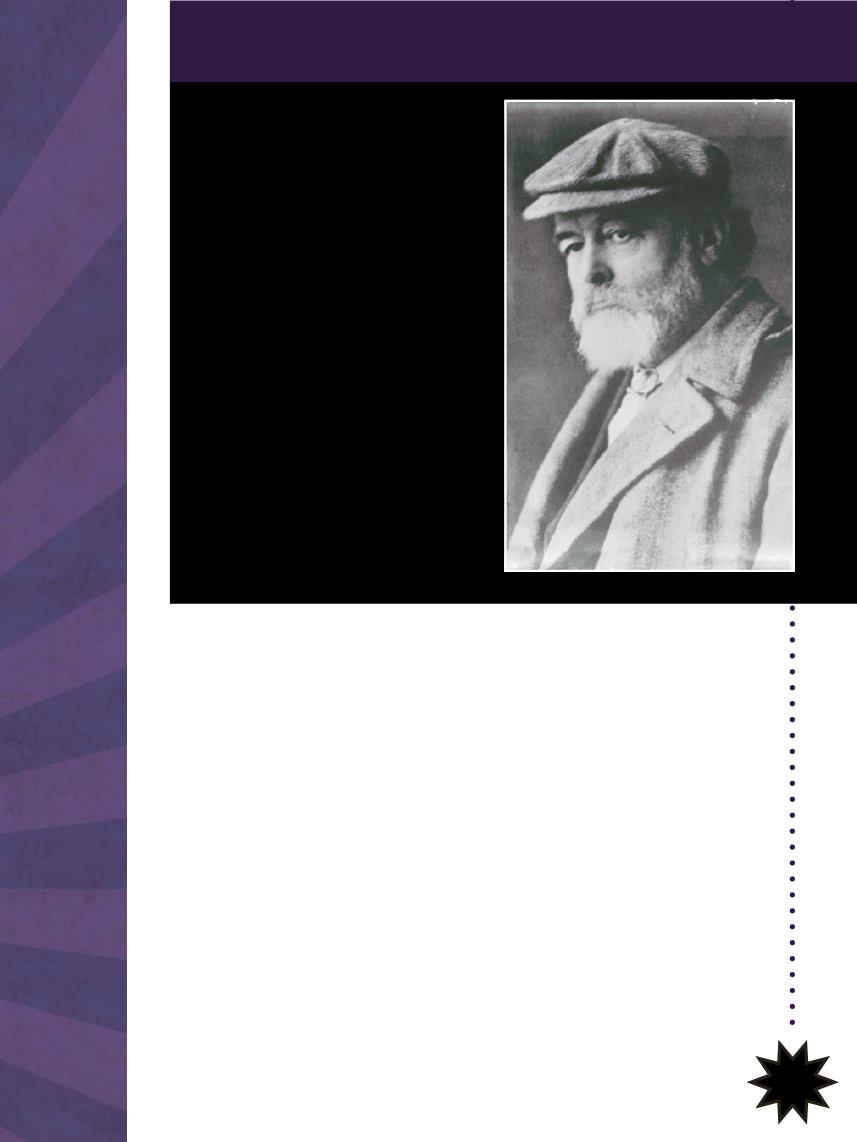
PERFECTING THE PLAY
Marconi set to work in a stuffy attic workshop at his father’s
country estate in Pontecchio, Italy, tinkering with his
experiments and reviewing the playbooks of earlier contenders
in the battle of the radio. He experimented with Oliver Lodge’s
coherer. He reduced the size of the coherer’s glass tube and
created a
vacuum
inside the tube to remove the air. He then
used a small lever with a knob at the end called a Morse key
to send and stop Hertzian waves through the tiny coherer.
With these tests, Marconi managed to invent a transmitter
that generated and sent electromagnetic waves carrying
signals to a receiver. Marconi was catching up to Tesla.
An Englishman named
Oliver Lodge (right)
developed a way to detect
Hertzian waves in an
electrically charged tube
in 1893. The tube, called
a coherer, could send
an invisible, silent signal
produced by Hertzian
waves from a transmitter
to a receiver. When the
signal reached the receiver,
the coherer caused a bulb
to light up or a bell to ring.
It was an early step on the
path to radio technology.
ASSIST
11


